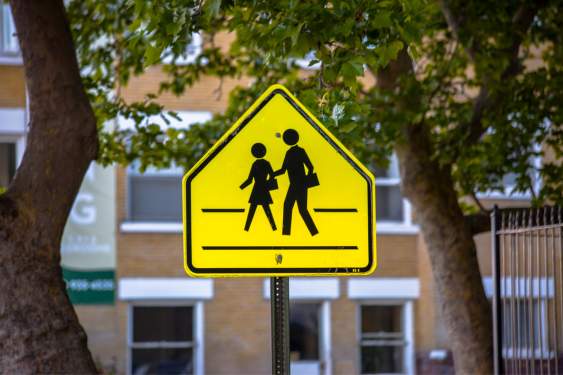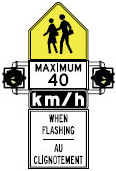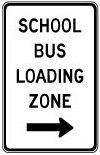
Written by Kayla Jane Barrie Updated on Aug 27, 2025 5 mins read

From September to June, school zones see increased traffic, which is why understanding school zone signs and safe driving in these zones is crucial as a driver.
A 2019 CAA poll found that nearly 70% of Canadians have witnessed a distracted driver in these areas, and 64% have witnessed speeding in a school zone. September is a dangerous month for pedestrians, with more fatalities than any other month.
As a driver, you must be vigilant for pedestrians and comply with school zone regulations - Buses, crossing guards, and children playing are just a few factors drivers must be cautious of.
A school zone is an area on a street near a school or crosswalk leading to a school with young pedestrians. School zones can be recognized by the yellow sign featuring silhouettes of two school children walking, and they may be within a community safety zone. There will also be signs that alert drivers of the reduced speed. There are often crossing guards and road markings to alert drivers of an upcoming school zone.
You need to recognize and understand school zone signs to drive safely in school zones. Here are the most common road signs in school zones.
A school zone sign is a five-sided fluorescent yellow sign with pedestrians crossing. This means you are coming to a school zone and should slow down, be cautious and watch for children. |
 |
The flashing school zone sign also has flashing lights with the speed limit in effect during school hours. |
 |
Reduced speed limit ahead. These will often be yellow and sometimes have flashing lights. |
 |
Indicates an area where the community has identified there to be a high risk for pedestrians. Traffic related offences in this zone is subject to increased fines. |
 |
Drivers must stop for a school bus when signals are flashing. |
 |
You’ll see this sign on multi-lane highways with no centre median. If you see a school bus with flashing lights, all directions must stop. |
 |
A zone where school buses load or unload passengers without using the alternating lights and stop arm. |
 |
School zones are put in place to ensure the safety of children. Here are the rules for driving in a school zone to consider.
Passing another vehicle or bus while in a school zone is illegal. No matter how slow the car ahead of you is going, it is dangerous to pass. Be patient and pay attention to what is going on around you to keep the community safe and lower your chance of a ticket.
Are you curious about how safe or unsafe school zones can be? Here are some statistics from CAA.
Every school day in Ontario, close to 824,000 students travel in 16,000 vehicles. Ensure the safety of those around you with these school zone driving safety tips.
If you notice anyone who is not a safe driver in a school zone or did not stop for a school bus, you can report it immediately to police by calling 911. Be prepared to provide:
Traffic offences, such as not stopping for a school bus or speeding in a school zone, have stricter penalties, with increased fines and additional demerit points on the driver’s licence. These penalties are generally higher compared to similar offences committed outside of school zones due to the greater risk posed to children and pedestrians in these areas.
Failing to obey a school zone sign, such as driving above the speed limit or not giving way to people crossing the road, can lead to paying fines, receiving demerits, and facing higher premiums. The consequences vary depending on the nature of the violation and the traffic laws of the area.
When driving through school zones in Ontario, it is important to be aware of the laws, fines, and safety tips in place to protect vulnerable road users. By following these guidelines, drivers can help create safer environments for children and pedestrians. Remember that safety should always be the top priority when driving through school zones.
| Categories | Industry NewsAuto |
|---|---|
| Tags | Driving TipsTips and Advice |
Read our insurance blog to get helpful tips, information and news.
Think refusing a breath test helps your case? In Ontario, it results in a minimum fine of $2,000 and a criminal record. Compare the penalties and protect your future.
Impaired driving in Ontario is a serious offence. Learn about impaired driving fines, penalties, statistics and other important information all drivers in Ontario need to be aware of before they get behind the wheel.
Learn why parking violations are non-moving, how long they stay on your record, and the serious indirect risk of unpaid tickets.
Has your car been totalled in an accident? Is your car a write off? Learn about vehicle write offs for a total loss insurance claim.